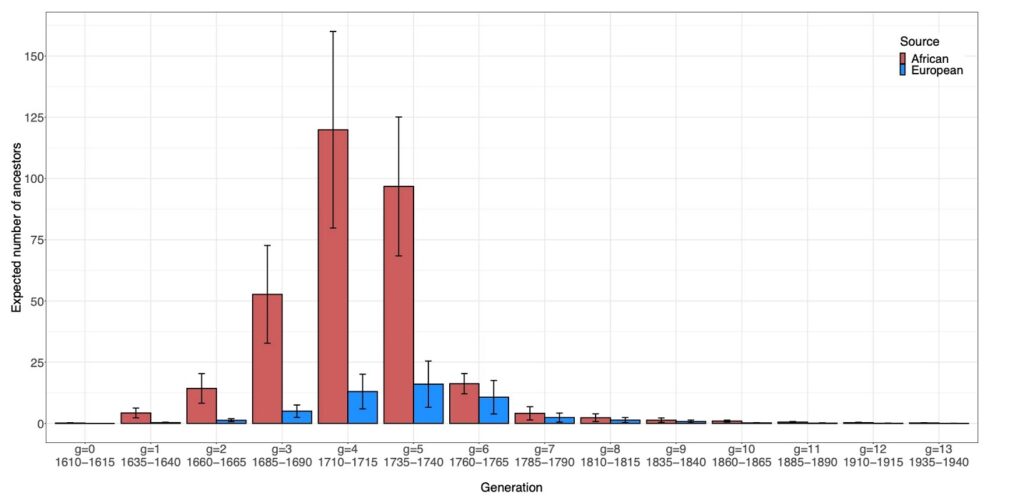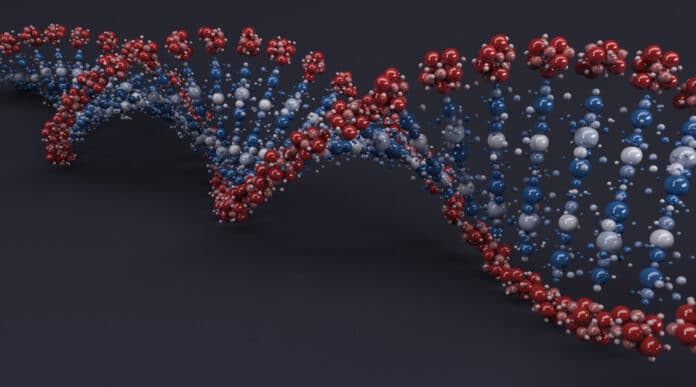People who want to know who their ancestors were frequently turn to family trees, photo albums, and grandparents. Genetic genealogy is also a helpful tool, but it often provides data on percentages of different populations in a person’s ancestry rather than specific individuals.
A new study by Stanford University and the University of Southern California academics presents a new way of thinking about genetic heritage, showing data that approximates the number of people from a source group.
This novel method is applied to the genetic and genealogical history of African Americans from the 1600s to the present to estimate the number of African and European ancestors who appear in the genealogy of a randomly chosen African American person.
The researchers discovered that a randomly picked African American born between 1960 and 1965 would be expected to have 314 African and 51 European genealogical relatives. In other words, if you trace a typical African American’s genealogical lines back from this cohort until the lines reach African ancestors and European or European American ancestors, we estimate that 314 lines reach Africans and 51 reach Europeans or European Americans.
Genetic heritage is frequently presented as estimated fractions of genomes tracing back to various source groups. However, there are other ways for a person to have the same level of ancestry. For example, one grandparent from a population, two great-grandparents, or four great-great-grandparents would all result in 25% ancestry. As a result, interpreting ancestry fractions regarding family trees can take time and effort. This study attempts to consider ancestry fractions from a genealogical standpoint. This experiment and the model they created allowed us to discover information on patterns in African American genealogy dating back to the early 1600s.
The new study is unique because the model estimates the average number of genealogical ancestors from each source population, African and European, for a random African American born between 1960 and 1965. These estimations are based on 13 generations stretching back to the 1600s. Previous genetics studies of African American population history should have considered estimating this amount.
The model calculates the ages at which different African and European genealogical lineages are achieved. We were initially astonished that the most significant number of African genealogy forebears lived in the early 1700s rather than at the height of the Transatlantic Slave Trade in the late 1700s.

However, it makes sense because a genealogical line traced back to the late 1700s may reach an African who had recently been transported or an African American descended from Africans in the early 1700s. Because of the few extra generations between the early and late 1700s, one line alone can add many African ancestors dating back to the early 1700s or even earlier. Although there are numerous lines
Meanwhile, Michelle Obama’s family tree is a terrific way to think about the study’s findings, as her family history contains many characteristics common among African American genealogies in the most recent generations. Her family tree book only recovered more information on one European ancestor and none of her African relatives.
This research fills a gap in the information about their unknown African forebears for African Americans learning about their ancestry. There are frequently no historical or census records about their African forebears, only European relatives or only a small number of African American ancestors. The new study provides data on how many African ancestors the average person may have and when those ancestors lived.
Journal Reference:
- Jazlyn A Mooney and others, On the number of genealogical ancestors tracing to the source groups of an admixed population. Genetics. DOI: 10.1093/genetics/iyad079
